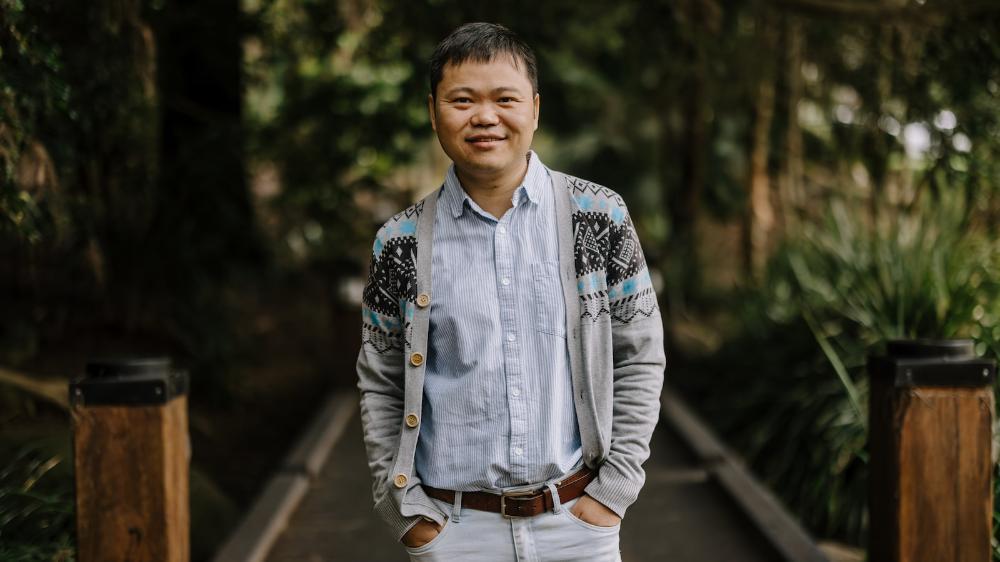Researchers unearth stone tool technology in China that was previously only found in Europe and Western Asia
The groundbreaking discovery of a sophisticated set of tools, dated to 50,000 to 60,000 years ago, has shed new light on the dynamics of human groups in East Asia in the late-Paleolithic era.
The discovery of the set of stone tools, unearthed from an open-air site in southwestern China, has overturned the notion that this technology was confined to Europe and Western Asia. Tools of this age have not previously been found in East Asia.
The findings are detailed in a new paper, 'Quina lithic technology indicates diverse Late Pleistocene human dynamics in East Asia', published today (Tuesday 1 April) in the Proceedings of the National Academy of Sciences, a high-profile multidisciplinary scientific journal.
Professor Bo Li, from the University of Wollongong's (UOW) School of Science, was among the group of international researchers who led the study, which included Dr Hao Li from the Chinese Academy of Sciences, Dr Qijun Ruan from Yunnan Provincial Institute of Cultural Relics and Archaeology, and Dr Davide Delpiano from Ferrara University. Other researchers contributed to this study from Universitat Rovira i Virgili, DePaul University, University of Science and Technology of China, Muséum national d'Histoire naturelle, University of Washington, and Peking University.
Professor Li said the discovery provides insight into technological developments and population dynamics in the Chinese Middle Paleolithic era.
"This discovery is truly groundbreaking," he said. "It challenges our current understanding of human history and technological development in East Asia".
"This discovery challenges the long-established prevailing theory among archaeologists that tools in Middle Paleolithic China were relatively simple and unchanged."
The collection of stone tools was extracted from the Longtan archaeological site in the Yunnan Province in southwest China. The age of the stone artefacts was determined using novel optical dating techniques developed by Professor Li and colleagues from UOW.
The Longtan stone tools revealed a complete Quina technological system, including cores used to produce large and thick flakes, which were further shaped and maintained as scrapers.
 Professor Bo Li.
Professor Bo Li.
Quina industry is one of the most representative tool-making strategies developed in the Middle Paleolithic era, around 300,000–40,000 years ago. It is characterised by steep, scaled retouch on thick flakes, producing robust scrapers with heavy edge modification, often associated with Neanderthals, and represents a strategy developed as a response to the open forest–grassland environments and cool/dry climates during the Marine Isotopic Stage 4, about 57,000 to 71,000 years ago.
The Quina technological system was found in Western and Southern Europe in this period but was not believed to have been present in East Asia.
The wear traces on the Longtan Quina scrapes suggested they were used on a variety of materials, such as bones, antlers, wood, meat, hides, and non-woody plants.
Professor Li said the evidence showed that the discovery at Longtan substantially broadens the geographic distribution of hominin species, the tools they used, and their adaptability to adapt to different climates and environments.
"The Longtan discovery also provides perspectives for understanding how hominins species evolved and progressed in East Asia before the large-scale arrivals of early modern humans around 45,000 years ago".
"By uncovering artifacts that are significantly older, we're forced to reconsider our models of human migration patterns and the evolution of technology in this part of the world. This opens up exciting new avenues for research and could rewrite the prehistory of East Asia as we know it."
About the research
'Quina lithic technology indicates diverse Late Pleistocence human dynamics in East Asia', was published in the Proceedings of the National Academy of Sciences: https://www.pnas.org/doi/10.1073/pnas.2418029122
The paper is authored by Qi-Jun Ruan, Hao Li, Pei-Yuan Xiao, Zhen-Xiu Jia, Fa-Hu Chen, from the Chinese Academy of Sciences, Qi-Jun Ruan and Jian-Hui Liu from Yunnan Provincial Institute of Cultural Relics and Archaeology; Bo Li from the University of Wollongong; Hélène Monod from Universitat Rovira i Virgili; Alexandra Sumner from DePaul University; Ke-Liang Zhao from the Chinese Academy of Sciences; Chun-Xin Wang and An-Chuan Fan from University of Science and Technology of China; Marie-Hélène Moncel from Muséum national d'Histoire naturelle; Ben Marwick from University of Washington; Marco Peresani and Davide Delpiano from University of Ferrara; and You-Ping Wang from Peking University.






